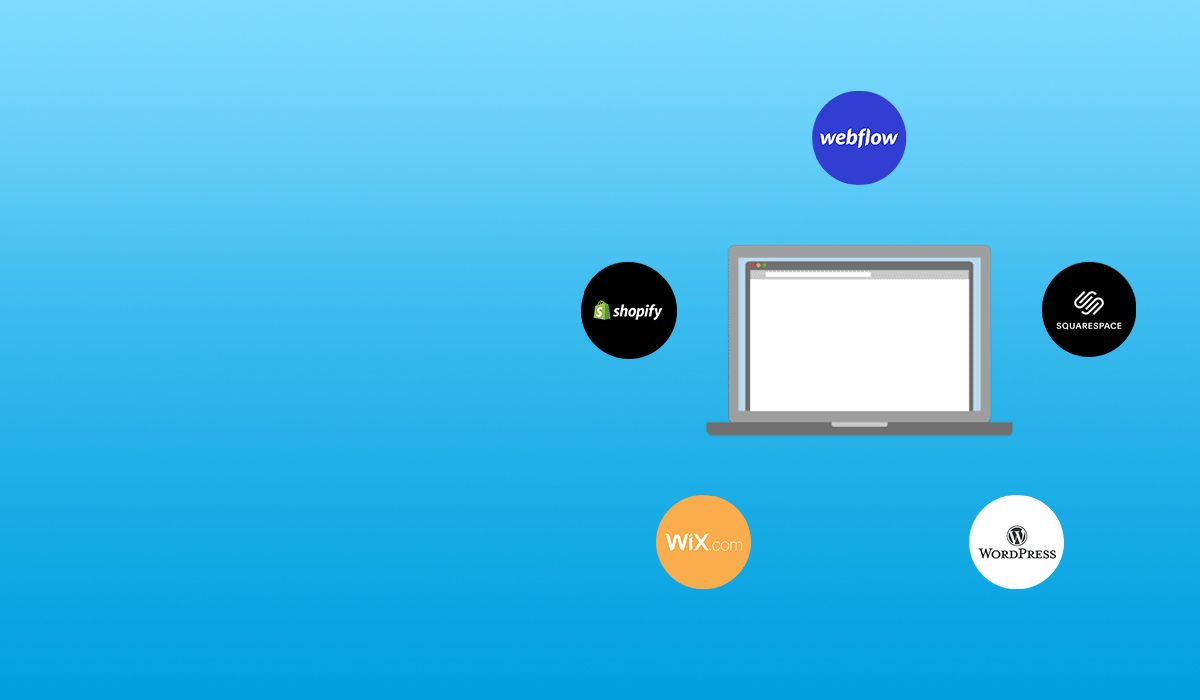DigitalBoost
Popular Web
Builder Tools

Web builder software can be the perfect choice for SMEs to create a professional website without the need for a developer. In this guide, we list the pros and cons of some of the most popular website builder software out there.
It's worth noting that there aren't any bad choices for which platform to use. It depends entirely on your business needs.
Let's get started...





Webflow
Best for...
Designers and advanced users
Pros
- Customisable, can create unique, better websites.
- Tons of official tutorials and a good online community to help you learn.
Cons
- A working knowledge of HTML/CSS is necessary.
- First-time web builders will find this platform very difficult.
- Learning curve is very steep.
Squarespace
Best for...
Hobbyists, independent professionals, bloggers and entrepreneurs who have no web creation experience.
Pros
- Quick to setup and very popular, so plenty online help available.
- Time to create a new Squarespace site will take no longer that several hours.
- Built-in shopping carts, blogging engine, content auto-posting to connected services and more.
Cons
- It's not actually as easy to use as their adverts suggest - still a learning curve involved and definitely need some basic knowledge in web to get the best out of it.
- There are so many ways to customise your template that it can feel overwhelming for an inexperienced user.
WordPress
Best for...
Blogs or simple web sites with a few content pages.
Pros
- Quick to setup and very popular so plenty online help available.
- Lots of plugins and themes for a new look or extra functionality.
- Lots of professionals with WordPress experience, so you can add customised functionality later if you need it.
Cons
- Essentially a blog platform with lots of add ons.
- It can be a target for hackers.
- Themes and plugins can introduce vulnerabilities & make the site slow.
Wix
Best for...
Simple sites.
Pros
- Templates are already structured, formatted & pre-populated with content - so you simply have to pick your favorite one and replace the pre-set content with your own.
- If you’re not creative or good with designs, Wix’s templates will work very well for you as you won’t have to struggle with creating your own page layout.
Cons
- Not that flexible if you want to do something outside of the templated structure.
- Once you choose a template, you can't switch to another.
Shopify
Best for...
E-commerce - those with products/services to sell online.
Pros
- Easy to use and quick to get up and running.
- Provides loads of functionality out of the box - inventory, customer accounts, discount codes etc.
- Provides integrations for multiple different payment gateways.
Cons
- Has the potential to get a bit expensive if you sell a lot of stock.
Need support creating or enhancing your digital platforms? DigitalBoost can help with a wide range of free support including webinars, guides, tutorials and 1:1 expert consultancy.
Good luck, and let us know how you get on! We love hearing from our users on social - so if you have any feedback, or want to tell us how this article helped you, please tweet us at@bgateway or find us on Facebook or LinkedIn.

